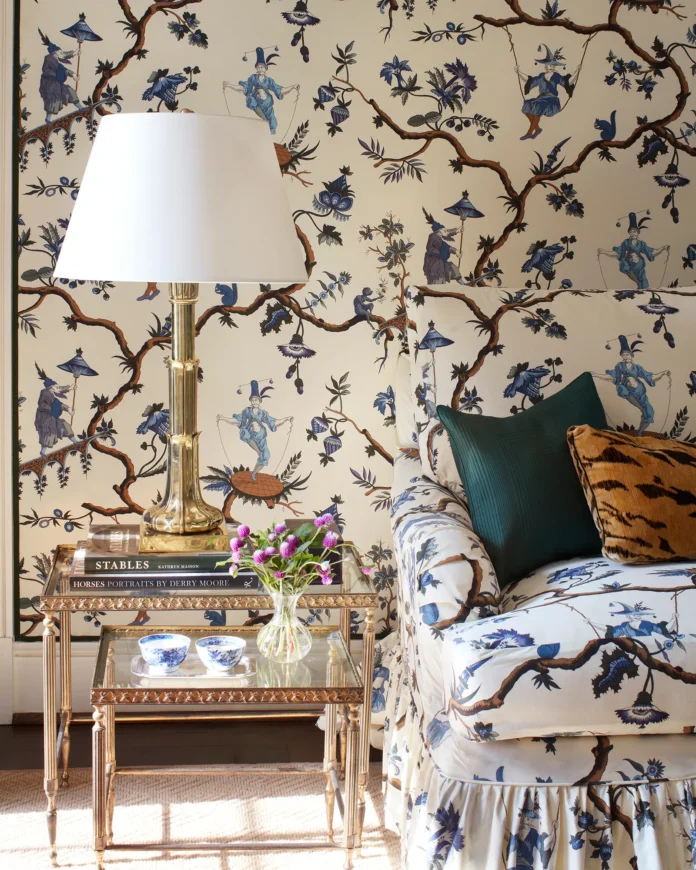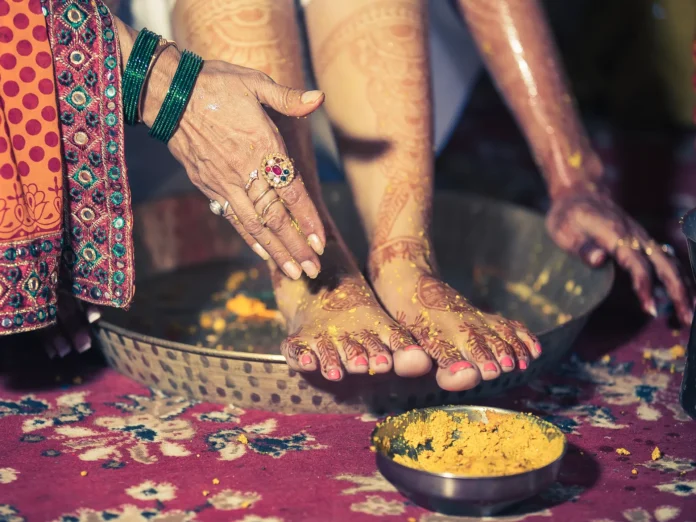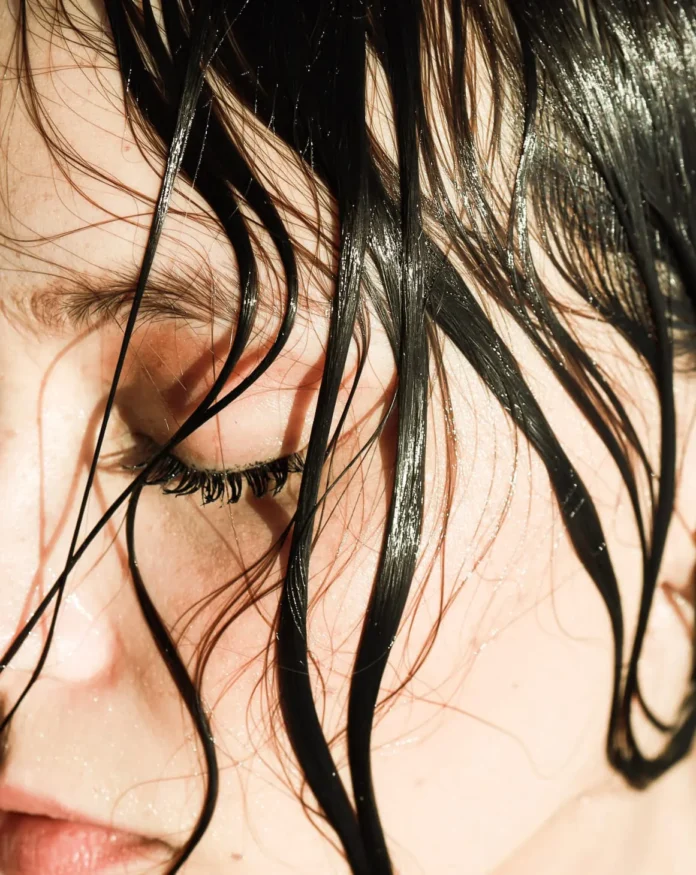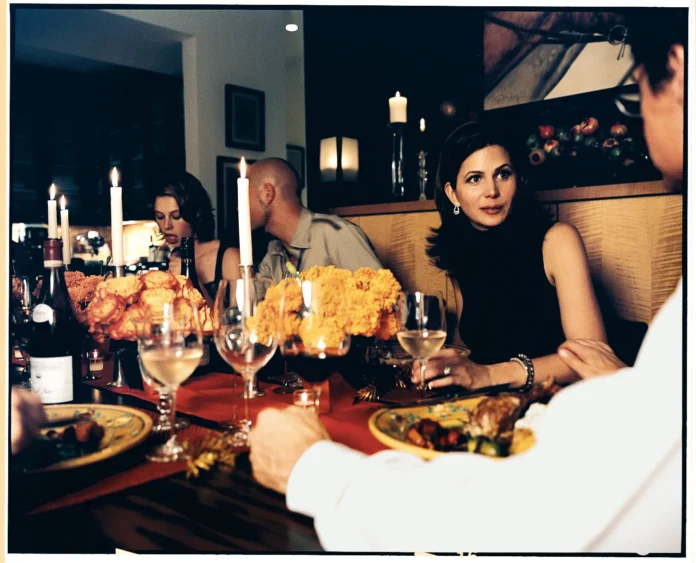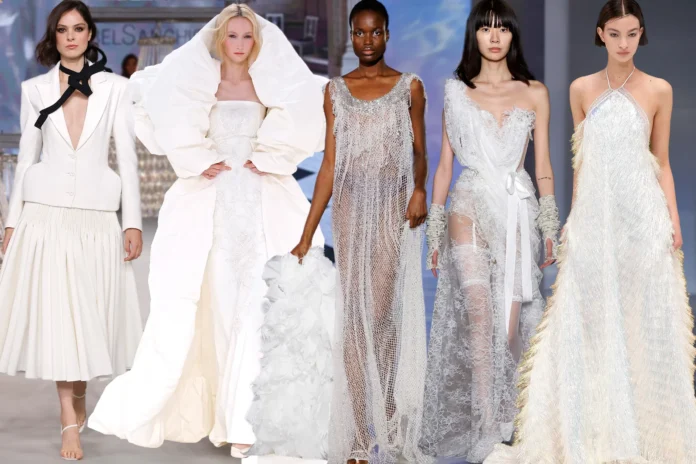While color drenching has taken the design world by storm, its more sophisticated counterpart—pattern drenching—has been quietly shaping interiors for centuries. This bold approach, often referred to as à la Française, traces its roots to the opulent courts of Louis XIV and Marie Antoinette, where damask-covered walls and Toile de Jouy fabrics reigned supreme. Today, designers are reviving this maximalist tradition, proving that when it comes to pattern, more really can be more.
A Rich History of Decorative Excess
From the grand châteaus of 17th-century France to Sybil Colefax and John Fowler’s iconic chintz-filled rooms, pattern drenching has long been the hallmark of luxurious interiors. “There’s a fearlessness in layering pattern across every surface—walls, ceilings, drapery, even furniture—that conjures the boldest names in design history,” says San Francisco-based designer Ken Fulk.
Fulk recently transformed a modest home library into a grand, immersive experience by swathing nearly every surface—ceilings, millwork, upholstery—in a historic William Morris & Co. print. “Busier patterns thrive on larger surfaces where the scale can be fully appreciated,” he explains. “When a pattern has room to breathe, it doesn’t overwhelm—it enchants.”
The Magic of Visual Illusion
Contrary to expectations, drowning a room in pattern doesn’t always make it feel smaller. In fact, Birmingham-based designer Caroline Gidiere argues that it can have the opposite effect. “When everything is covered in the same print, the boundaries of the room blur,” she says. “It’s like a tonal space—hard to tell where one element ends and another begins.” This technique is especially useful for disguising architectural flaws or lackluster furniture.
Gidiere channeled the legendary Parisian apartment of Lee Radziwill for a client’s sitting room, covering walls, drapery, and upholstery in 155 yards of Le Manach’s Mikado fabric. “If you want a room to be iconic, this is the way,” she says. “It’s a look that appeals to a refined audience—one that appreciates the commitment (and budget) required to pull it off.”
Serenity in Repetition
At first glance, pattern drenching might seem like a maximalist’s dream, but designers insist it requires restraint. “It’s harder than mixing prints,” says Boston-based designer Katie Rosenfeld. “Without careful attention to scale and line, you risk ending up with visual chaos—or worse, camouflage.”
Charleston designer Alexandra Resor demonstrated the art of balance in a lavender-hued bedroom, where Raoul’s Madeline print adorned walls, drapery, a canopy bed, and even throw pillows. “The subtle stripe kept it from feeling too floral,” she notes. “Despite using 107 yards of fabric, the room felt serene, not suffocating.”
Practical Magic: Solving Awkward Spaces
For tricky layouts, pattern drenching can be a lifesaver. Chicago designer Wendy Labrum transformed a cluttered loft—formerly used for suitcase storage—into a cohesive retreat by wrapping walls, sloped ceilings, and a custom daybed in the same striped fabric. “Pattern has a way of unifying odd angles and awkward spaces,” she says. Her pro tip? Back your favorite fabric for use as wallpaper—a trick that ensures durability and seamless application.
In another project, Labrum used an oversized gingham check to make a petite guest room feel expansive. Paired with a sleek Pierre Guariche sconce, the print added warmth without shrinking the space.
The Cocoon Effect: Perfect for Bedrooms
Seattle designer Heidi Caillier is a firm believer in pattern drenching for bedrooms. “It creates a cocooning effect, ideal for relaxation,” she says. In a Brooklyn primary bedroom, she enveloped the space in Rosa Bernal’s Sevilla print—covering walls, a custom bed, and vintage chairs—to contrast the urban view outside with a lush, intimate retreat. “Done right, it’s both soothing and statement-making.”
Why Pattern Drenching Endures
While trends come and go, pattern drenching remains a testament to the power of bold, cohesive design. As Ken Fulk puts it: “This isn’t just decoration—it’s transformation.” Whether disguising flaws, amplifying grandeur, or crafting a cozy escape, this centuries-old technique proves that sometimes, the most daring choice is to go all in.
Key Takeaways for Trying Pattern Drenching at Home:
- Start with a hero fabric—one with enough scale and interest to carry the room.
- Consider the room’s purpose—bedrooms benefit from enveloping prints, while living spaces may need more visual balance.
- Don’t fear repetition—uniformity can create harmony, not monotony.
- Use professional backing for fabrics applied to walls to ensure longevity.
In a world of fleeting trends, pattern drenching stands as a timeless love letter to decorative abundance. As designers continue to reinvent it for modern spaces, one thing is clear: this is one trend that will never fade into the background.
